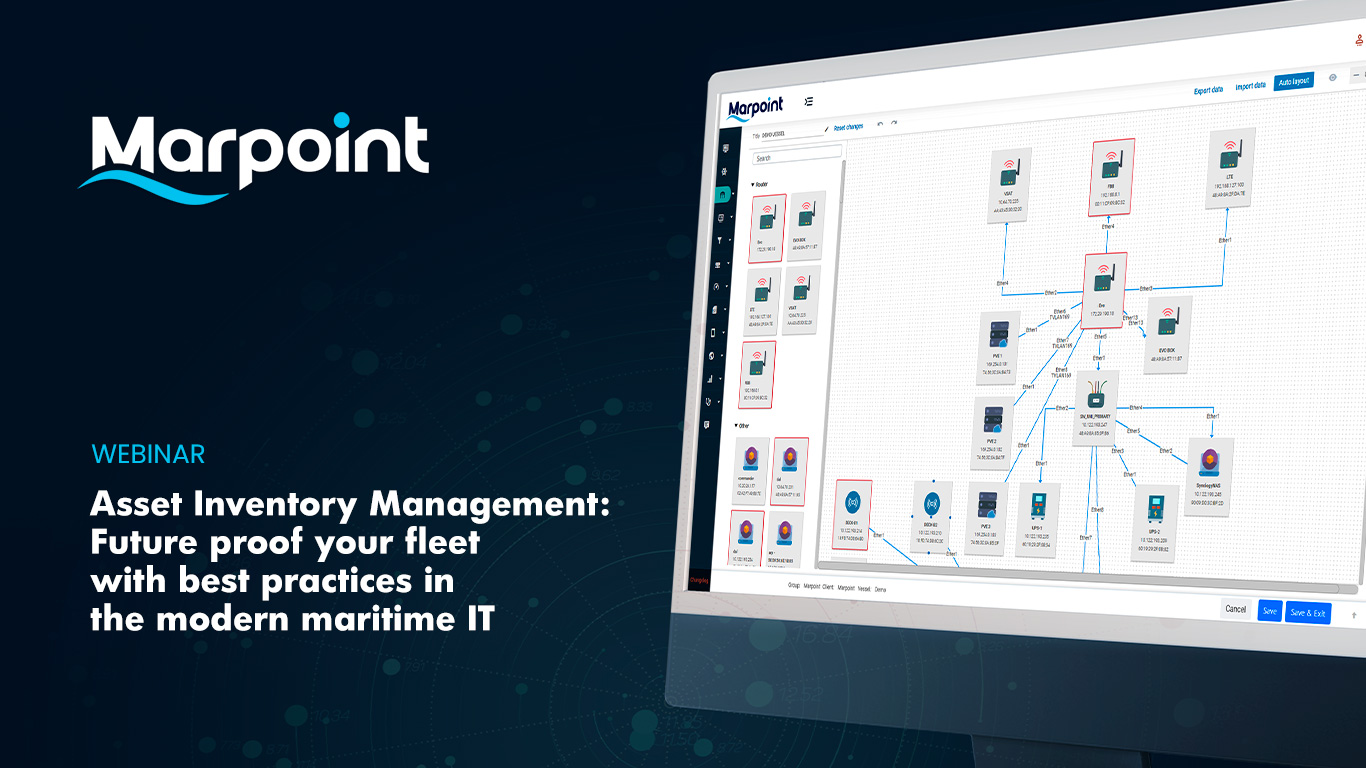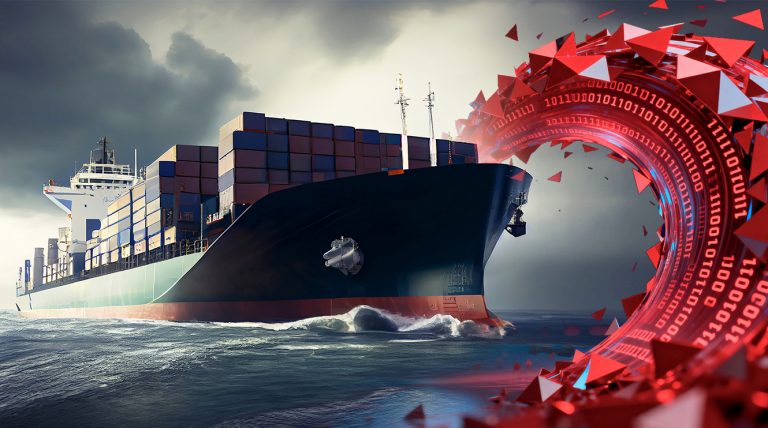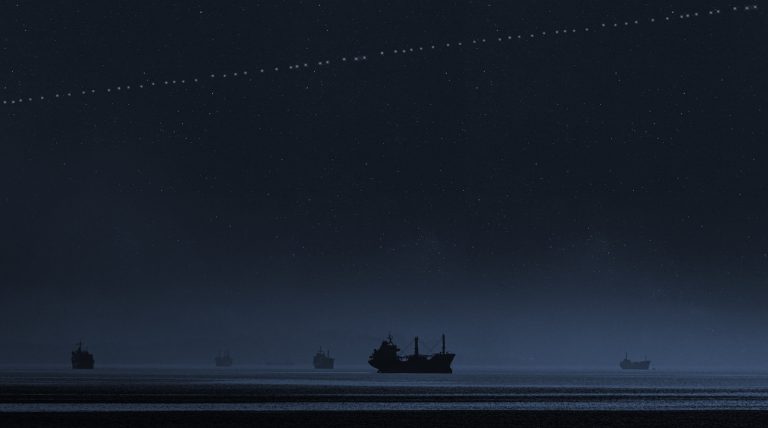The recent webinar, “Asset Inventory Management: Future Proof Your Fleet with Best Practices in the Modern Maritime IT” brought together industry experts to discuss the vital role of asset inventory management in enhancing maritime cyber safety and operational efficiency. The session featured insights from leading professionals, focusing on the integration of digital technologies and the importance of robust cybersecurity measures.
While speakers, Mr. Stavros Frountzas ICT Manager at Laskaridis Shipping, Mr. Dimitris Marinis ICT Manager at Angelakos (Hellas) S.A., Mr. Giorgos Savvaidis System Administrator and Cybersecurity Officer at Naftomar Shipping and Trading, and Mr. Christos Vythopoulos Head of Operations at Marpoint, acknowledged the operational and management benefits of integrating digital technologies, they also stressed the heightened cybersecurity risks that come with increased connectivity.
The focus of the summit was on asset inventory management as a key weapon in this digital battleground. Both Mr. Frountzas and Mr. Marinis highlighted its importance in:
- Mitigating Cyberattacks: Effective management of digital assets, from networks to data, helps companies identify and prevent cyber threats.
- Staying Compliant: New regulations like the IACS unified requirements for cyber resilience (mandatory from July 2024) necessitate a comprehensive asset management strategy.
- Optimizing Resources: Efficient management ensures that resources are used effectively, leading to improved organizational performance.
- Rapid Incident Response: Detailed asset inventories empower companies to react swiftly to cyber incidents and isolate affected systems to minimize damage.
The discussion also acknowledged the challenges of navigating a complex regulatory landscape and the need for proactive measures – including keeping systems up-to-date – to mitigate cyber risks.
Watch it
Modern Shipping Embraces Digital Efficiency, But Faces New Cybersecurity Challenges
Mr. Savvas Delis, Head of Sales at MarPoint, explored the evolving landscape of the maritime industry. While digital transformation promises significant improvements in operational efficiency and remote access for shipping companies, it also creates new vulnerabilities. Mr. Delis highlighted the increased risk of cyberattacks like hacking, ransomware, and malware due to greater reliance on digital systems. The discussion then focused on navigating the upcoming regulatory landscape. Mr. Delis emphasized the importance of adhering to new cyber safety regulations set by organizations like IEX, which become mandatory in July 2024. These regulations require companies to maintain a detailed inventory of all onboard hardware and software.
Asset Management Key to Cybersecurity and Efficiency
Mr. Stavros Frountzas, ICT Manager at Laskaridis Shipping, underscored the critical importance of asset inventory management in the maritime industry. He highlighted how effective management of digital assets, including networks, devices, and data, is crucial for both cybersecurity and regulatory compliance. Mr. Frountzas emphasized the upcoming IACS unified requirements for cyber resilience, becoming mandatory in July 2024, and stressed how compliance with these regulations can significantly reduce the risk of cyberattacks. Beyond cybersecurity, Mr. Frountzas discussed the broader benefits of asset management, including improved resource efficiency and overall organizational performance. He acknowledged the challenges companies face in maintaining compliance across various regulatory authorities, but emphasized the importance of proactive measures to stay competitive in the ever-evolving maritime landscape.
Asset Management for Streamlined Security and Lifecycle Care
Mr. Dimitris Marinis, ICT Manager at Angelakos (Hellas) S.A., championed the importance of asset identification and vulnerability management within the maritime industry. He highlighted the need to comprehensively identify network devices, operating systems, and other digital assets. This comprehensive view allows companies to address potential vulnerabilities and ensure proper lifecycle management of these assets. Mr. Marinis further emphasized the critical role of detailed asset inventories in facilitating effective incident response during cyberattacks. With a clear understanding of their digital landscape, companies can quickly isolate affected systems and minimize damage. He also stressed the importance of software lifecycle management, including keeping software versions updated and retiring outdated systems, particularly those with unsupported operating systems like Windows XP, which create significant security risks. Finally, Mr. Marinis praised Mar Point’s suite of tools, specifically their instant search capabilities and zoning features, which contribute to enhanced network management and overall cybersecurity posture.
LEO Connectivity Boosts Efficiency, But Demands Stronger Cybersecurity
Mr. George Savvaidis, System Administrator and Cybersecurity Officer at Naftomar Shipping and Trading, addressed the evolving landscape of maritime connectivity. While he acknowledged the benefits of LEO constellations like Starlink, which offer increased bandwidth for operations, he also highlighted the expanded attack surface this creates for cybercriminals. Mr. Savvaidis emphasized the need for more robust network policies and stricter firewall rules to mitigate these risks. He further stressed the importance of proactive cybersecurity measures, particularly due to the faster response times required by LEO’s high-speed connections. Finally, Mr. Savvaidis underscored the critical role of integrating asset management tools with cybersecurity solutions. This combined approach allows companies to maintain network integrity and effectively protect themselves from cyber threats in the age of LEO connectivity.
Inventory Asset Management Tool Showcase
Christos Vythopoulos, Head of Operations at MarPoint, took center stage to demonstrate their innovative asset inventory management tool. This comprehensive solution boasts advanced monitoring and management capabilities, empowering maritime companies to gain complete control over their digital landscape.
The tool shines with several key features:
- Detailed Asset Documentation: Users can meticulously document all hardware and software details, including crucial information like purchase and installation dates, current status, and access to relevant manuals.
- Real-Time Monitoring: Gain real-time insights into the health and performance of network devices and all connected hardware and software.
- QR Code Integration: Mar Point’s system leverages QR codes assigned to each asset. This allows for quick and effortless access to detailed information, ensuring proper deployment and maintenance procedures are followed.
- Customization and Efficiency: Recognizing the diverse needs of different organizations, Mar Point designed their tool to be highly customizable. IT managers can tailor the system to their specific requirements, ultimately optimizing overall efficiency and bolstering cybersecurity measures.
Conclusion
MarPoint would like to express our deepest appreciation to our speakers for their insightful presentations and to our esteemed participants for their enthusiastic engagement. With a participation rate of 99%, we are thrilled to have shared this knowledge-packed event with such a dedicated group of maritime professionals.
As the maritime industry sails towards a more digital future, the message from this summit is clear: embracing technology brings not only efficiency but also new cybersecurity challenges. By prioritizing asset management, staying proactive, and leveraging advanced tools, maritime companies can navigate this digital sea with confidence.
The webinar concluded with an interactive Q&A session, where speakers answered questions about the practical implementation of asset inventory management and the future of digital transformation in the maritime industry. The consensus was that while technological advancements like LEO connectivity provide significant benefits, they also require robust asset management and cybersecurity strategies to mitigate the associated risks.





